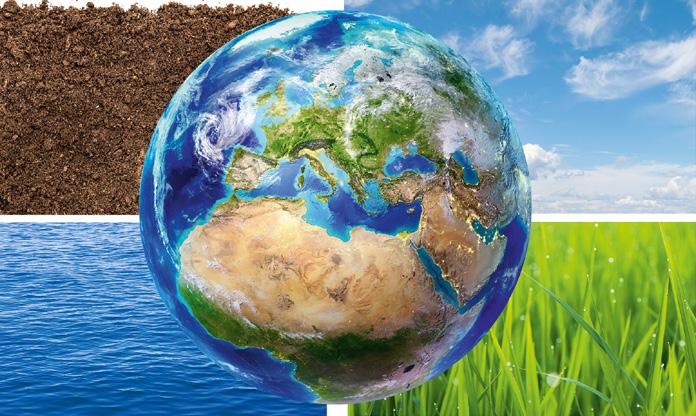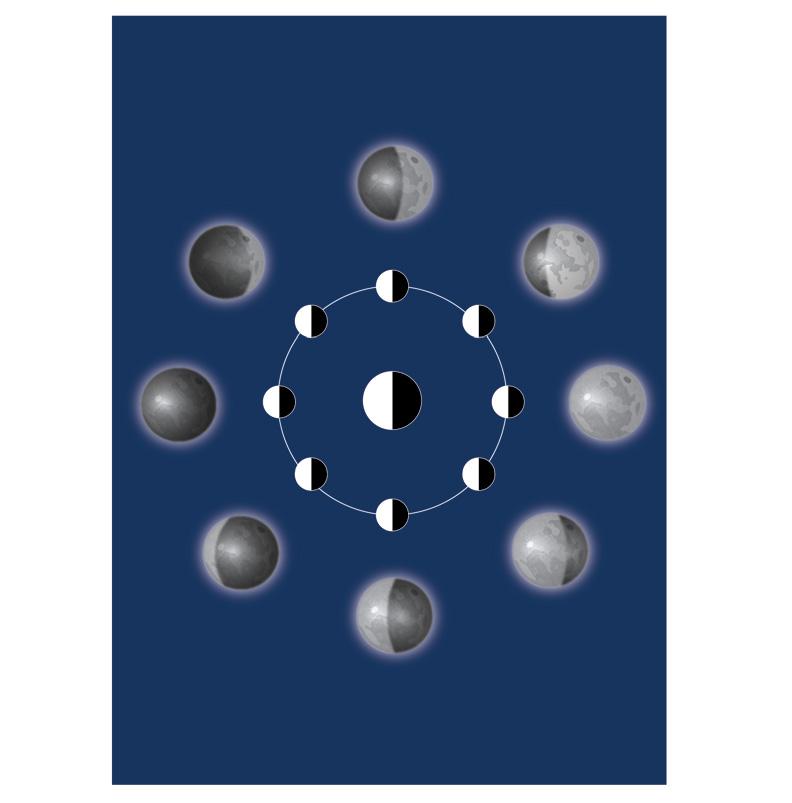
1 minute read
THE EARTH’S SYSTEMS AND THE MOON
Refresh When you leave the city, what do you see on the ground around you? What do you breathe?
8 The Earth’s systems
The Earth is made up of four different systems that work together to make the planet what it is. These systems are also called spheres. They contain all the things on our planet.
crust Earth mantle core

9 The Earth’s layers
The crust is the thinnest layer. It is solid. Its thickness varies from 7 to 70 km. It can be continental or oceanic (below the ocean). The mantle is made up of solid and melted rock. Its temperature is between 1 400 and 3 000 ºC. The outer core is made of liquid iron and nickel. It creates a protective magnetic field around the Earth. The inner core is extremely hot: about 6 000 ºC. It is made of iron and nickel, but it is solid because of the pressure.
1 a) b) ocean
Many scientific words have a Greek or Latin origin. Look for the meaning of these prefixes. Do you know any other words that contain them?
2 Make a mind map in your notebook to show the spheres and layers of the Earth.
3 ocean glacier
Oxygen g) Carrots
10 The Moon
The name of the satellite that orbits around the Earth is the Moon.
It is a rock that measures approximately one quarter of Earth’s size. It does not produce light, but its surface reflects the light from the Sun.
The Moon is the only satellite we can see without a telescope.
The Moon rotates on its axis at the same speed that it orbits around the Earth. For this reason, there is always one side of the Moon that we cannot see.
Depending on the Moon’s position in its orbit, it reflects sunlight differently, so we see a different shape. We call this the phases of the Moon.

The phases of the Moon
4 Work in pairs and find out the correct answer. Why are there craters on the surface of the Moon?
a) Since the Moon has got gravity it attracts meteorites. However, the Moon has not got an atmosphere to protect it, so they crash onto its surface and make craters.
b) Because the gravity of the Moon makes the surface sink towards its core.
5 11 Listen and complete the sentences about the Moon in your notebook.
a) It has… b) It causes… c) Its surface… d) It doesn’t… e) It takes…






